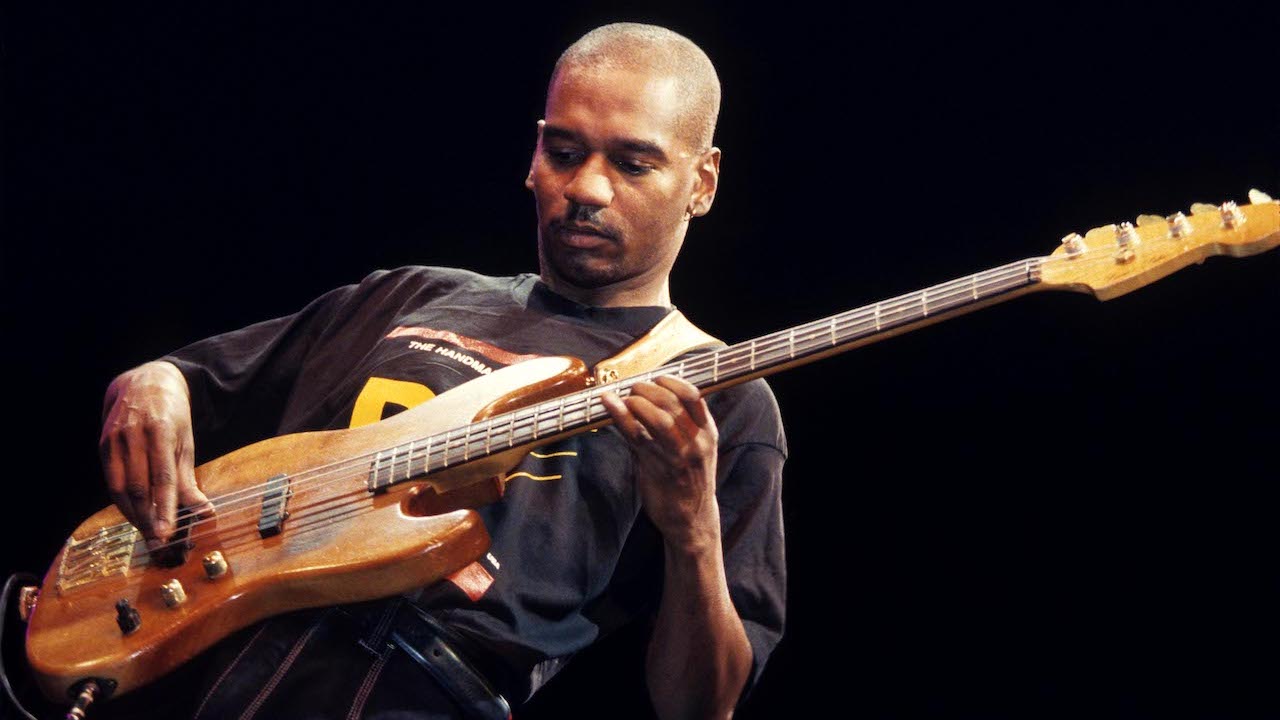“Zoom discontinued that pedal because nobody bought it – but bass players are always coming up to me wanting to know how I got those sounds”: Remembering jazz great Victor Bailey, who used an unsung multi-FX pedal for his cover of Prince’s biggest hit
From his ’80s heyday with Weather Report through to his mid-’90s stint with Madonna, Victor Bailey earned his stripes as one of the world’s greatest bass players

From his ’80s heyday with Weather Report and Steps Ahead through his mid-’90s run with Madonna, two tours of duty with the Joe Zawinul Syndicate, and his stint in the Bill Evans/Randy Brecker Soulbop Band, the late Victor Bailey earned his stripes as a reliable groovemeister and consummate accompanist.
He stepped out from that supportive role on a few rare occasions, notably his four recordings as a leader – 1989's Bottom's Up, 1999's Low Blow, 2001's That's Right and his fourth and final solo outing, 2009’s Slippin' N' Trippin’.
Bailey's big production number on Slippin' N' Trippin' was an audacious cover of Prince's Kiss, on which he methodically layered 12 separate tracks of bass guitar.
“That's all bass,” Bailey told Bass Player back in November 2009. “The backbeat is me knocking on the wood with my knuckle, the kick drum is me turning the preamp on the bass all the way up and hitting the bass with my palm, and to make the snare sound I used a Shure SM57 mic to record the sound of me slapping the actual wood of the bass.”
“The solo is false harmonics going through the distortion effect on the Zoom 607 bass pedal with just a touch of envelope filter added in. I haven't heard anybody do anything with false harmonics since Jaco did Birdland.”
The Zoom 607 is a multi-effects pedal that figures prominently throughout Slippin' N' Trippin' for all the distortion tones and envelope filter sounds that Bailey generated. “I was never an effects guy myself, mainly because when I went to Berklee every bass player there stepped on a chorus pedal for solos in order to sound like Jaco. And I said, ‘No, I can't be like everybody else.’
“So I avoided pedals for a long time. But this Zoom pedal was the first one I heard that didn't sound like any other effects out there. Zoom discontinued that pedal because nobody bought it – but whenever I play live, bass players are always coming up to me after the gig wanting to know how I got those sounds.”
Get The Pick Newsletter
All the latest guitar news, interviews, lessons, reviews, deals and more, direct to your inbox!
Elsewhere on the album, on a startlingly accurate rendition of John Coltrane's chops-busting Countdown, Bailey burns with sax-like fluidity while simultaneously scatting Trane's blistering lines. Meanwhile, Ron Carter walks furiously underneath on upright bass.
“I transcribed a ton of Trane solos when I went to Berklee, and that was one of them. I always thought it was such a beautiful piece of music, even though it's an improvisation. I used to walk around Berklee just singing it. People who had heard me play would ever have the idea that I could play a John Coltrane solo note-for-note, let alone scat along with it.”
Another side of Bailey's musicality comes out on an intricate four-part vocal harmony showcase on Like a Horn, an adaptation of a song that his sax-playing father Morris Bailey Jr. wrote back in the '50s. “I'm not a great singer, but I can take a tune like that and get the story across.
“A few years ago I was at my father's house in Philadelphia and had asked him for a tune for this record. Just as I was posing the question, I noticed the chart for Like a Horn sitting on his couch. I thought it looked interesting, so I brought it home not knowing what I was going to do with it. I ended up adapting the lyric, so it was a chance to record my vocals and do all the background harmonies.”
On an uncommonly lyrical reading of the timeless Burt Bacharach ballad Alfie, Bailey turned in a rare performance on fretless bass. “I'd hardly played fretless on anything before. There were two songs with Weather Report – What's Going On' from Sportin' Life and Swamp Cabbage from Domino Theory. Other than that, I've never been that interested in fretless.
“I hear so many people play it out of tune, which is one of the worst sounds there is in all of music. But for those particular tunes it just worked. I was surprised how good it sounded on Alfie. I worked on the phrasing a little to get a certain expressiveness that you just can't get with the fretted bass.”
Bailey explained that it was his experience of playing in a power trio setting with guitarist Larry Coryell and drummer Lenny White – resulting in 2005’s Electric and 2006's Traffic – that liberated him to really stretch out on the bass.

“That trio really opened up a lot of things for me. A lot of the stuff that I do – the tapping, the chordal stuff and the triplet thumb thing – doesn't fit in most situations. But with Larry and Lenny I was able to do those things on a gig, and I have to credit Larry for encouraging me to put it all out there.”
“I was playing stuff I don’t think James Brown understood. He told me, ‘You have to play the one – you’re playing too much’”: Six years after he quit touring, Bootsy Collins reflects on James Brown and George Clinton, and what he gets out of playing today
“When I first heard his voice in my headphones, there was that moment of, ‘My God! I’m recording with David Bowie!’” Bassist Tim Lefebvre on the making of David Bowie's Lazarus










![[from left] George Harrison with his Gretsch Country Gentleman, Norman Harris of Norman's Rare Guitars holds a gold-top Les Paul, John Fogerty with his legendary 1969 Rickenbacker](https://cdn.mos.cms.futurecdn.net/TuH3nuhn9etqjdn5sy4ntW.jpg)


